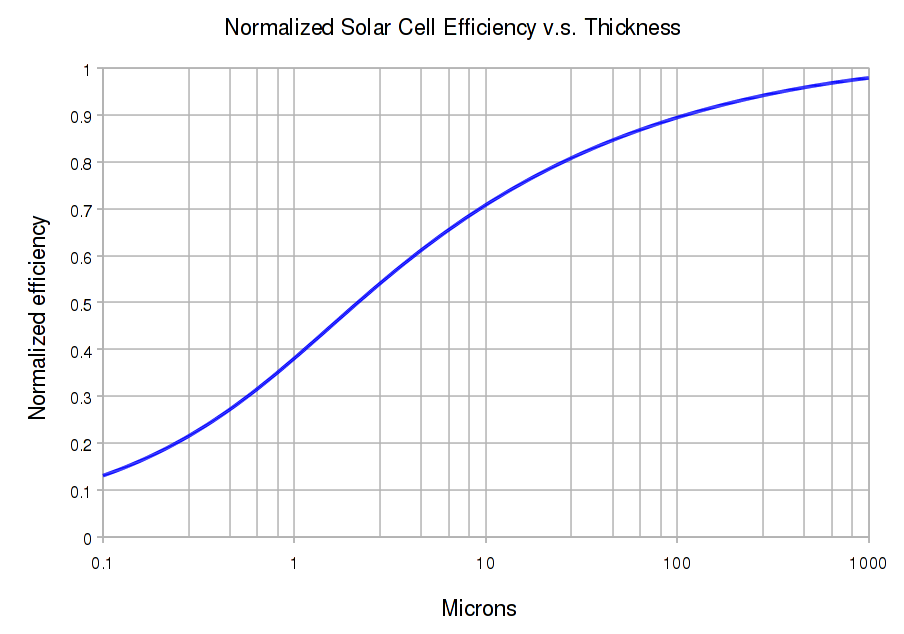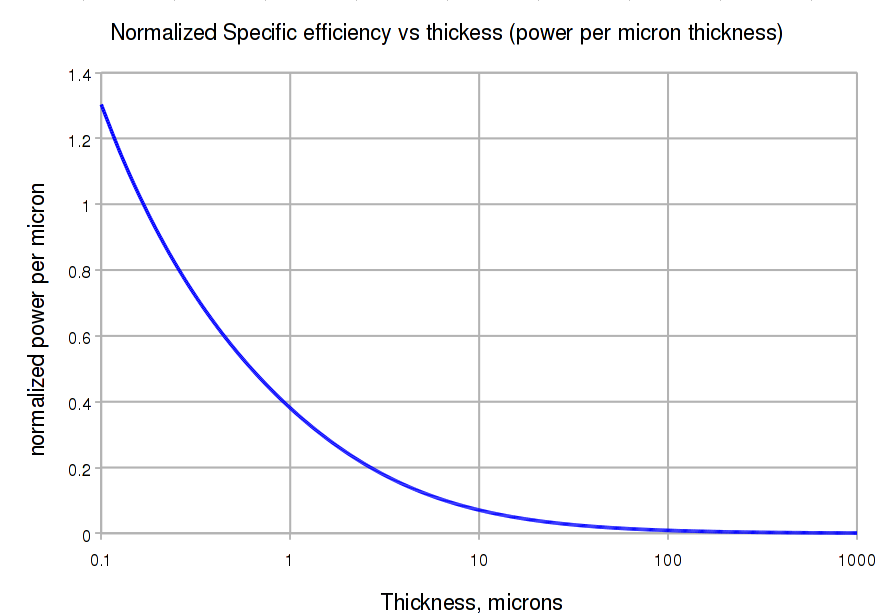Solar Cell
The thickness of the server-sat, and its weight, and the cost of launching it, is determined by the thickness of the solar cell. Most mono-crystalline solar cells are thicker than 150 microns, but 65 micron thick cells have been reported. How thin can a cell get?
100 micron thickness may be needed for safe mechanical handling in production, and to minimize curling. Ultrathin solar cells ( a micron or less ) will be optically translucent, and will not absorb very much sunlight. How thick does a cell have to be?
Light absorbed in solar cell silicon generates hole-electron pairs. For a P- solar cell with an N+ top junction, electrons drift towards the top junction, are accelerated across the depletion region, and collect on the N+ cathode, where they are collected and run through the external circuit. The holes drift to the bottom electrode, which is also a mirror, doubling the optical path. Photons that pass through the silicon in both directions are not captured, which can happen if the cell is too thin, or if the photon energy is too small to make carrier pairs.
Fortunately, the absorption is rather good above 1.2 eV, meaning that most shorter wavelength light is captured, even for thin silicon. Very thin single-crystal solar cells are still relatively efficient.
This graph estimates the efficiency of the solar cell as it gets thinner. While efficiency goes down with thickness, the efficiency per thickness and weight is best for very thin cells. |
|
This graph estimates the efficiency per thickness, as above. |
|


